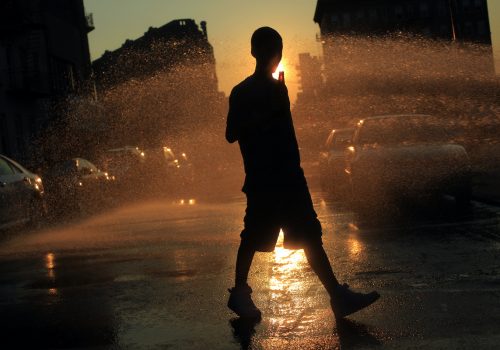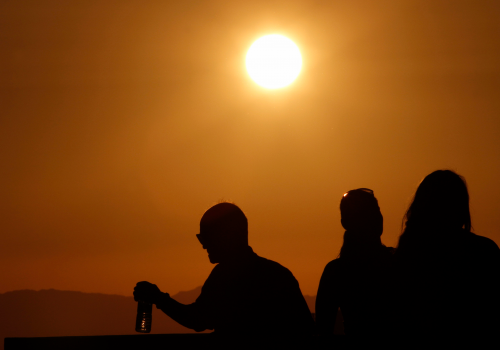
by Kathy Baughman McLeod
Rising heat: It’s been the theme of this American summer.
As we confront wildfires, “heat domes,” and moments like the day in July when more than one-third of US states were under extreme heat warnings, our very conception of summer is changing—from a time of fun and leisure to an extended period of emergency. On my own vacation, as I listened to radio ads heralding the joys of beach season, I found myself wondering how any of us can relax at a time when so many people are at risk and dying.
Most people know the knock-on effects of global warming by now: rising sea levels, mass extinction of plants and wildlife, worsening floods, fires, and hurricanes like the one that battered Louisiana this week. But heat itself is too often overlooked as a destructive force in its own right. One reason is that heat often destroys quietly. Its consequences manifest themselves in the person found dead from heat stroke at home; the farm worker collapsed in the field; the public rail system melting down. Though heat kills more Americans annually than any other natural disaster, it does so without the drama of a hurricane ripping the roof off a house.
Extreme heat also tends to escape our attention because the data on its effects is lacking and the problem is hard to quantify. Surveying the wreckage from a tropical storm, we can calculate its cost to the economy and toll in lives. It’s much harder to measure the impact of something as insidious and widespread as rising summer temperatures. Yet we cannot effectively combat extreme heat until we understand its scope.
That’s the motive behind a groundbreaking study unveiled today by the Atlantic Council’s Adrienne Arsht-Rockefeller Foundation Resilience Center, which I lead. Combining our expertise with data analysis by the research firm Vivid Economics, the study is designed to quantify some of the most important economic and social impacts of heat in the United States today—and to project what they’ll look like in the not-too-distant future.
While the study focuses on the United States, it has global relevance: A key lesson is that there’s no escape from the effects of extreme heat. Almost everyone, almost everywhere, at some point soon, will be feeling them.
The key findings
As the study shows, the warning lights are flashing furiously. Heat is killing and injuring many Americans while striking the country at the core of its economic machine, with serious consequences for workers, businesses, and local governments. Perversely, extreme heat promises to keep costing people and governments more just as they’ll need more and more money to adapt to it.
Our study estimates the total economic loss from heat in the United States to be at least $100 billion annually—a figure that will double by 2030 and quintuple by 2050 if we don’t reduce our greenhouse-gas emissions or adapt to the changing climate. By comparison, last year’s record-breaking US hurricane season caused an estimated $60-$65 billion in economic losses.
We calculated economic loss by assessing how heat is impacting worker productivity. This means time lost on the job when people have to take breaks to avoid overheating—and when it’s too hot for them to work at all. It also means the ways that we all slow down and become less efficient when working in the heat. It’s the construction worker forced to put down equipment and seek shade; the delivery driver struggling to keep up the intense pace of delivery in high temperatures; the mask-wearing employees bogged down in warehouses without enough cooling and ventilation. And it’s the office workers, too, who find that they can’t think quite as clearly on the days when the air conditioner can’t keep up with rising temperatures.
Though heat kills more Americans annually than any other natural disaster, it does so without the drama of a hurricane ripping the roof off a house.
Yet workers who spend significant time outside are clearly suffering most. The economic effects of extreme heat are most pronounced in the sectors, such as agriculture and construction, that largely depend on outdoor work. Thirty-two million people, or nearly one-fifth of the US workforce, have jobs that involve considerable time outdoors. They hail from a large and diverse mix of professions: tour guides, landscapers, oil and gas workers, lifeguards, conservationists. All around the country, workers across industries are already getting hurt more, producing less, and earning less, all because of the simple fact of how hot it is outside.
Some areas of the country have been hit far harder than others. Under current conditions, according to the study, Arizona alone is expected to suffer nearly half of the nation’s heat-related deaths. Texas, on the other hand, accounts for almost a third of the country’s heat-related economic losses.
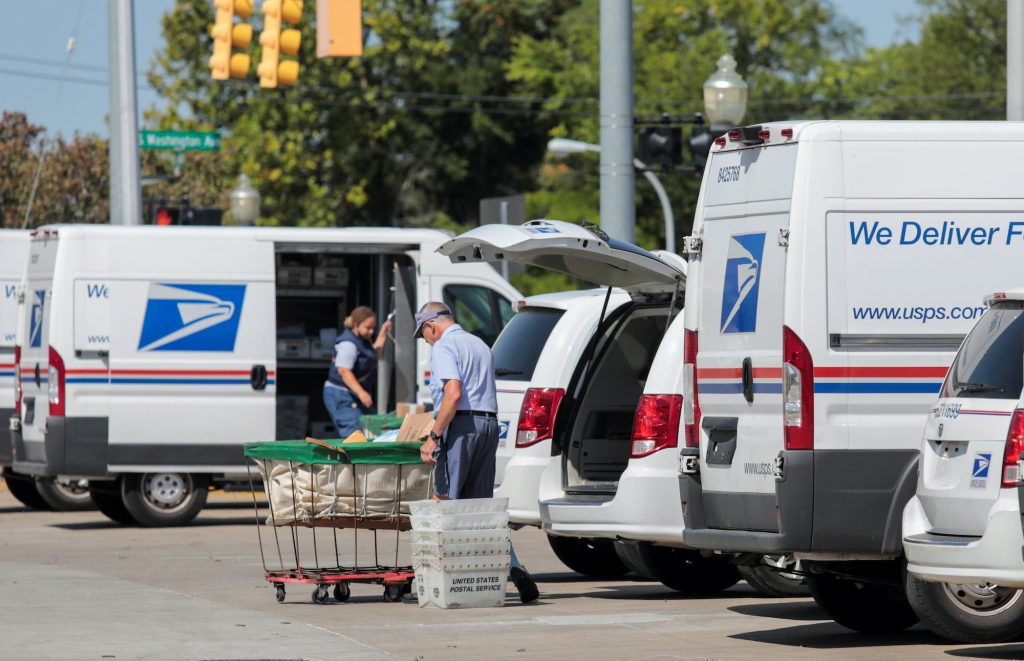
Here are some of the findings that struck me most.
Interpreting the findings
Digging through the numbers, I see a window into how, for too many Americans, the experience of work will drastically change. People will face more risk at work even as they become less productive and earn less doing it. Companies will also take a financial hit. So will governments as a result of losses in tax revenue. All of this has serious consequences for the US economy.
We are, in fact, already seeing workers struggle to adapt. This summer, farm laborers in Washington state began to arrive at their fields at 3 a.m. to pick fruit before sunrise. Restaurants have closed to keep kitchen staff from passing out from heat exhaustion. A trade publication for water-drilling companies has advised workers how to set up rigs to maximize shade. The makers of portable air conditioners are marketing them to oil workers.
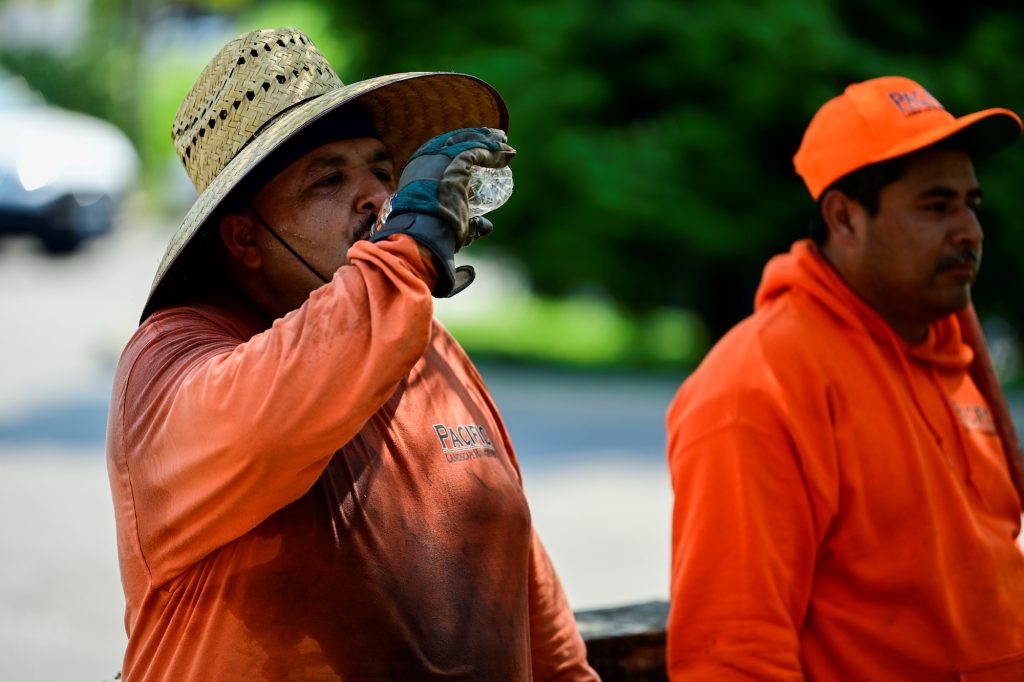
While extreme heat is ultimately inescapable, one of the study’s key takeaways is that exposure to it is dictated heavily by where people live. Many of the places most vulnerable to extreme heat now will be even more so in the future. And many of the workers who suffer most will be those without the ability to relocate—or the resources or political clout to adapt when they’re forced to stay.
Another warning that jumped out to me from the data: Extreme heat will continue to exacerbate the fact that racial and ethnic minorities tend to suffer most from climate change in the United States. The economic effects of extreme heat are disproportionately borne by Black and Hispanic Americans, who are currently losing 18 percent more in productivity than their White counterparts, the study shows, because they live in higher percentages in heat-stressed locations. That means they’ll be burdened with an outsized share of the costs: losses in income and access to work on top of greater health and safety risks. In California, for example, which has a large percentage of Hispanic agricultural workers residing in the hotter, southern parts of the state, Hispanics are experiencing productivity losses as a share of income that are 45 percent greater than those of White workers.
Our partner in the study, Vivid Economics, analyzed historical and current climate, employment, and demographic data on a county level—and projected what those data points will look like in the future given expected climate scenarios. The data includes what kinds of jobs are present in a given location, how hot that location is, how vulnerable those jobs are to heat stress, and how much estimated value those jobs are losing because of that heat stress. The study also incorporated localized data on mortality and occupational injuries. Some areas of the country may be more or less adapted to the heat in ways that this analysis could not capture, so local estimates may overstate or understate the effects. The results thus reflect the expected scale on average and the geographic distribution of extreme heat’s impacts.
Extreme heat will continue to exacerbate the fact that racial and ethnic minorities tend to suffer most from climate change in the United States.
As previously noted, the data reveals how the economic impact of extreme heat is spread across the country. Few places are spared—especially as we peer into the future.
Texas, Mississippi, and Oklahoma are currently experiencing the steepest worker-productivity losses. But the state-level view masks how localized the problem can be. Often, individual counties are bearing the brunt of the damage. Below are the counties assessed to be the most exposed to extreme heat in terms of productivity losses now and into the future.
Manufacturing, agriculture, and construction, mining, and utilities are the industrial sectors most affected by extreme heat. Although services is proportionally the least affected of the four sectors studied, it loses the most money due to heat overall because of its overall breadth and size. It’s the largest and most valuable sector of the US economy, including everything from finance and media to restaurants, transportation, deliveries, healthcare, and housekeeping.
Agriculture is in particular trouble due to extreme heat’s additional effects on crops. Yields of corn exposed to extreme heat could decrease by around 10-15 percent by 2050, which could result in estimated losses of approximately $6 billion. These losses are likely to be concentrated in the Midwest.
Such economic costs, moreover, are disproportionately affecting Black and Hispanic Americans.
As workers become less productive and make less money, they will also be getting hurt more. Heat stroke and exhaustion are risks that come with many jobs. But extreme heat can also cause injuries in another way: Hot and tired workers are more prone to making mistakes. Extreme heat dayscurrently account for approximately 120,000 occupational injuries in the United States, according to the study. That could increase almost fourfold by 2050.
And then there are the effects on our health outside of work. Extreme heat reduces our ability to participate in outdoor activities, causing us to walk, cycle, and exercise less. It also places stress on the body, leading to acute heat-related illness and exacerbating chronic illness, especially cardiovascular, pulmonary, and renal diseases.
As a country, we’re just starting to grasp the fact that heat is quietly killing people. These numbers on excess deaths due to extreme heat can help us understand the extent of the problem.
What can we do about it?
So what exactly can we do about the coming meltdown? Our response must begin with greater recognition of the threat.
There is a critical and practical way that the US government can help do this—and it can happen right away. I have spent the last year making the case for a national early-warning system for heat waves. The concept is very similar to the approach we take to hurricanes, which we have been naming and categorizing for nearly seventy years. Heat events should also be categorized to provide guidance for interventions; when an event is given a high enough category, it should receive a name.
The Arsht-Rock Resilience Center is currently working with a team of meteorologists, climatologists, physicians, and heat-health specialists to build the methodology for determining how many categories we need (we will likely recommend creating between three and five). Rather than depending entirely on meteorology, our approach would also be based on determinations of how a heat event is likely to impact human health and well-being. It would rely on a combination of heat-intensity measures, including the Nairn-Fawcett excess heat factor and the identification of air masses that have historically contributed to excess deaths during heat waves.
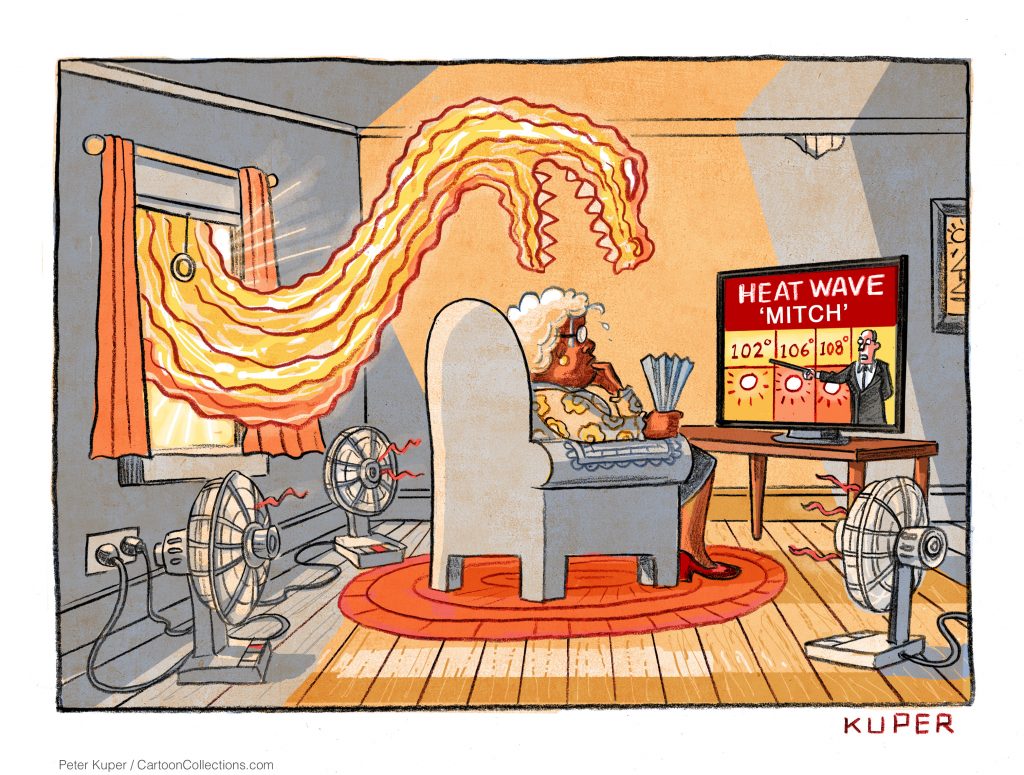
A name and category would help both the public and decision-makers understand the potential severity of heat waves and, over time, build a culture of awareness and preparation, which would save lives. In the course of living and working in Florida for more than thirty years, I came to know well what a Category 4 hurricane (with a name, of course) meant and how to prepare for it. When a heat warning comes along, people could likewise take note and plan ahead: stay indoors, run the air conditioning or go to a place that has it, check on elderly relatives and neighbors, drink more water, keep pets inside. Would the 32-year-old hiker who died of heat-induced hyperthermia in 2019 on a trail not far from my home outside Washington, DC have ventured out that day if the heat wave we were suffering had been treated with the same urgency as a tropical storm? What about the fifteen-plus people, many of them children, who had to be rescued by fire crews on the same trail during another heat wave this month?
An early-warning system for heat waves could also trigger the release of public funding that allows governments to take action. Officials could identify where their most vulnerable citizens live and prioritize those communities for assistance. They could dispatch teams to go door to door to find elderly and other at-risk people living in hot apartments with no air conditioning. Governments could also mobilize generators during power outages and provide transportation to a cooler place for those most in danger. Some communities are deploying these strategies already, but we should make them standard practice.
Such a system would protect vulnerable workers, too. We would never expect Amazon drivers to venture out on their rounds during a Category 5 hurricane. Why would we expect them to do the same during a Category 5 heat wave? This new system would grant confidence, awareness, and leverage to workers who currently lack the power to tell their employers when it’s too hot for them to work safely outside. And it should be just a starting point for a new mindset regarding heat and worker safety. We need a national law, ideally one that expands on the bills recently proposed by House and Senate Democrats to protect farm workers or provide direct financial assistance to communities for heat-resilience projects. The legislation should include heat protection as a new element of workers’ rights. There are many other measures that companies can consider: cooling vests for outdoor workers in certain temperatures, for example, and heat training for managers to help them avoid putting staff at risk.
Would the 32-year-old hiker who died of heat-induced hyperthermia in 2019 on a trail not far from my home have ventured out that day if the heat wave we were suffering had been treated with the same urgency as a tropical storm?
Beyond the workplace, there are steps we can take on an individual level. All Americans, no matter where they live, should conduct their own personal heat risk assessments. Do you have underlying conditions? Are you diabetic, obese, or suffering from a heart or respiratory condition? Are you over seventy years old? All these factors can make you more susceptible to heat. Do you know how to recognize the warning signs of heat exhaustion and heat stroke, and do your friends and family? Do you have air conditioning in your home? If not, can you safely get to a cool place—with a friend or relative, for example, or at a local cooling center or even a shopping mall? As with everything these days, there’s an app for this. EXTREMA allows you to input key information and then alerts you to your personal risk and recommends a route to a cooler location.
There are other affordable ways to decrease the heat exposure of our homes, such as planting trees. The organization American Forests has shown that air temperatures in areas with healthy tree canopy are twenty to forty-five degrees cooler than temperatures in nearby areas without shade. Many local governments have Adopt-a-Tree programs. The Miami-Dade County program, with which we partnered in 2020 to give away 8,000 trees and seedlings, will provide up to two trees per year to every single-family and duplex homeowner. No room for trees? Even adding plants around your house can help.
We would never expect Amazon drivers to venture out on their rounds during a Category 5 hurricane. Why would we expect them to do the same during a Category 5 heat wave?
Local governments can take on more of the burden by, for instance, adding tree cover on a large scale, especially in urban areas where extreme heat often hits hardest. They can establish green corridors, or walkways for pedestrians under the shade of trees or other cover. They can turn heat-radiating concrete and asphalt into green spaces, and build fountains and pop-up water features that can be moved as needed to cool the air and provide a place for kids to play.
Governments must start addressing extreme heat’s hard financial realities as well. People should not be choosing between running air conditioners that will generate energy bills they fear they can’t afford, and putting themselves at risk of dying. In some parts of the country, there are already policies in place that keep utility companies from turning off electricity for non-payment during a heat wave. That should be the norm, but there should also be energy-assistance programs available to people who need help with keeping their air-conditioning units running—or installing them in the first place. (Running air conditioners to save lives presents its own challenges, since air conditioning is often powered by fossil fuel-burning energy, the source of planetary heating. We must simultaneously and hugely accelerate the transition to renewable energy, but that’s another essay.) Workers most at risk also need financial relief if they’re experiencing wage loss because of extreme heat.
Cities, especially, must identify extreme heat as a pervasive and growing risk—as many, in fact, already have. We have not built our cities to accommodate the temperatures we’ve brought upon ourselves. The glass, asphalt, steel, concrete, and other materials we use to erect our urban centers are exacerbating the climate-driven trend of rising temperatures, in what’s known as the “heat island effect.” In response, communities around the United States and the world are successfully deploying “smart surfaces,” which reflect heat rather than absorbing it.
But cities need money from public, private, and philanthropic sources both for long-term investments to reduce urban heat and short-term preparation and response to extreme-heat events. Cities should also appoint chief heat officers who can accelerate and coordinate responses to extreme heat while making sure that those residents most vulnerable to it are being cared for. With some support from the Arsht-Rock Resilience Center, Miami-Dade County Mayor Daniella Levine Cava recently announced the first such officer in the United States. We are supporting similar efforts globally: in Athens, Buenos Aires, Seville, and Freetown.
People should not be choosing between running air conditioners that will generate energy bills they fear they can’t afford, and putting themselves at risk of dying.
Companies, for their part, should be spurred by this study to better understand their exposure to heat risk. Worker vulnerabilities have the potential to dramatically interrupt business and supply chains and present companies with both financial and reputational risks. Companies whose business strategy and operations are informed by heat-risk considerations will reap benefits in short- and long-term earnings and performance, while meeting the expectations and values of their employees and customers.
As far as the Biden administration is concerned, there are immense and immediate opportunities at the national level to protect people, communities, and local economies from heat. The administration, in fact, has already wisely kicked off an interagency heat task force. In November, the United Nations climate conference COP26 will present a big window to show and share progress on climate adaptation. Here’s my proposed to-do list for the administration:
Last week, I was a fly on the virtual wall during a series of focus groups on the subject of extreme heat. One of the participants was a rancher from Arizona. He shared that he puts booties on his dogs when it’s so hot that their feet could burn, and often wakes up at 4 a.m. to work while the temperatures are bearable. He described opening the door and being greeted by heat that “is like a punch in the face.”
At the end of each session, the participants were asked which natural disaster they thought kills the most people in the United States each year. Even among people selected specifically for their recent experience with extreme temperatures, only one person out of thirty correctly said “heat”—and it was not the rancher.
For me, this only underscored the urgent need for a new and sweeping campaign to raise awareness about extreme heat and inspire immediate action to address it. It’s time to wake up to the nameless, silent threat that’s all around us.
Kathy Baughman McLeod is a senior vice president and the director of the Adrienne Arsht-Rockefeller Foundation Resilience Center at the Atlantic Council, and the chair of the Extreme Heat Resilience Alliance.
This article was updated on September 7, 2021.

